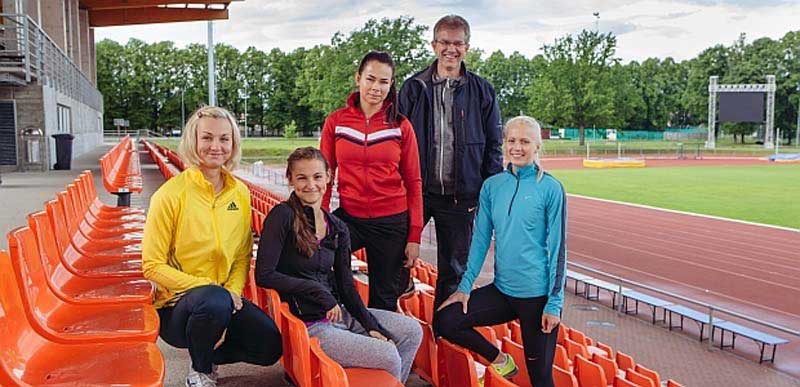
Mehis Viru is an associate professor at the Institute of Sport Pedagogy and Coaching Science at University of Tartu and personal coach for top Estonian hurdles and jumpers. Mehis is also well known as a coauthor to the state of the art textbook “Biochemical Monitoring of Sport Training” that he wrote with his father professor Atko Viru, famous for his pioneer work on endocrine functions in muscular activity and adaptation mechanisms in training. (Credit Windsprint and KM pharma)
Note: Adaptation is the purpose of training, making a real change to the body, not benefiting from talent or better equipment. Dr. Viru is both a sport scientist and coach who can help bridge the gap from training theory and science to applied coaching. Enjoy.
Creating a Comprehensive Biochemical Testing Approach
Freelap USA – Your presentations in Stockholm and Sundsvall focused on the goals of training athlete adaptation changes. Monitoring usually tries to focus on fatigue, and you showed that changes in biochemical status over time may guide coaches better. In the United States, biochemical testing is now cheaper, faster, and more accessible. What would you say is a good frequency of testing for teams and a list of biomarkers to check? Testing every week may leave the team with unhappy athletes, but once a year during a physical will not be enough. What is a good rhythm you see in your experience?
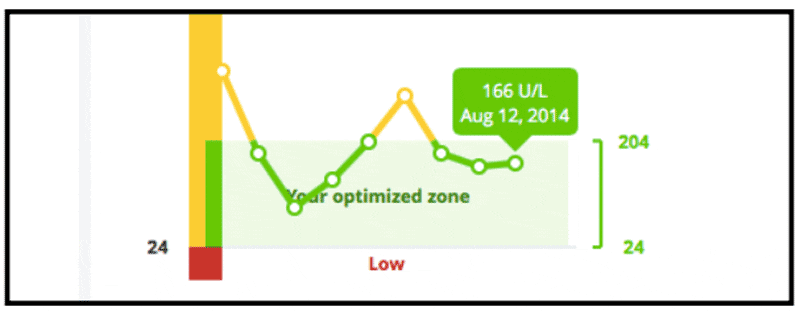
Figure 1: Using Creatine Kinase in a panel has value because the time course slope of athletes and load can be calculated based on both physical and emotive variables. Those athletes with chronically high cortisol and low free testosterone but very low CK are likely to be dealing with recovery and stress issues outside of training. CK is not to see how on recovers from the training bout as CK clearance is not useful because clearance rates are not repair rates with muscle and tendon. (Screenshot InsideTracker Pro)
Dr. Viru – Sports training influences an athlete in a wide way starting with changes at molecular level and ending up with changes in functioning of different organs. Therefore, one should not concentrate only to one-two biochemical tests and make deep conclusions according to the results of these tests. Instead, a coach or a sports scientist should try to get an overview of the whole situation by using also physiological, psychological, event specific performance tests. Coach should also follow everyday training session numbers (series and reps, kilograms, meters and centimeters) and athlete’s behavior during training sessions. Especially during a warm-up of a training session to better understand the condition of athlete’s muscles and tendons and according to the situation more precisely choose the exercises and training load for the concrete training session.
An athlete is a human being that means there are several non-sport factors (financial, study, relationship, and other problems) that may greatly influence athlete’s performance. Without having a good trust and communication with your athlete coach, may not know these problems and think that decline in performance is solely due to his inadequate training plans. Some athletes may be too shy to complain his personal problems. In that case training diary where he writes his problems may help.
The details of training monitoring depend on the goals of the concrete training monitoring process. So there cannot be a one single correct answer to the questions how, when, etc.
As monitoring is a purposeful process performed with the aim to increase the effectiveness of training guidance and is based on recording of changes on an athlete during various stages of training or under the influence of main elements of sport activities (training sessions, competition, microcycle or mezocycle of training) the aim of the monitoring determines the frequency and the choice of markers. Training monitoring is a specific process depending on sport event, performance level of an athlete and age/gender peculiarities, health/injury status. Therefore, the methods for training monitoring should be chosen depending on the specificity of a sport event and athlete’s characteristics.
Some biochemical markers like lactate are meant for using during training sessions, and some like CK and urea can show the influence of training load during a bit longer period. But the most important is to know what metabolic processes the chosen marker represents, what the limitations of the marker are and how to interpret the results. I have seen athletes (even Olympic champions!) whose fingers were holy like a watering can, as their coaches had become fond of lactate testing and had taken 15-20 samples per day without knowing what they are doing.
Several companies are producing portative systems to measure biochemical markers, but the list is limited. For example urea (an end-product of protein degradation) can be measured by a portative system but if you wish to be more accurate and follow the changes in the turnover rate of contractile proteins (like actin and myosin) you should measure the levels of 3-methylhistidine. But it means you must have access to a biochemical lab. So the choice of markers may depend on the access to different measuring systems and labs.
One can use several biochemical markers for training monitoring, but the main aim of sport training is to increase performance level. It means that event-specific performance tests must have a constant place in training monitoring programs. Again – keep your eye at the big picture and do not stick in 1-2 markers.
Carl’s Take – In the next few years portable system are going to get biomarkers analyzed faster, more accurately, cheaper, and with more variety. The problem is getting data is the first step, not the end results. Analysis and then application of interventions is essential to make changes. In the meantime, people are doing nothing here with testing, and it’s embarrassing with all of the available resources. We have teams spending a fortune on player tracking hardware with athletes that are malnourished with countless deficiencies, and don’t get me started with hormones.
Understanding Chronobiology and Testing
Freelap USA – The Autonomic Nervous System is popular now because of smartphones and the data being easily collected. Non-invasive data is helpful, but the underlying biochemical factors are usually the areas where interventions are made. Cortisol follows a circadian rhythm and time zones from travel disrupt this significantly. What do you think coaches should do with biofeedback to help get athletes in a better mood state to relax, thus reducing stress responses at the wrong time? Henk was very progressive with this with Nelli Cooman; any ideas on the mental side to help here?
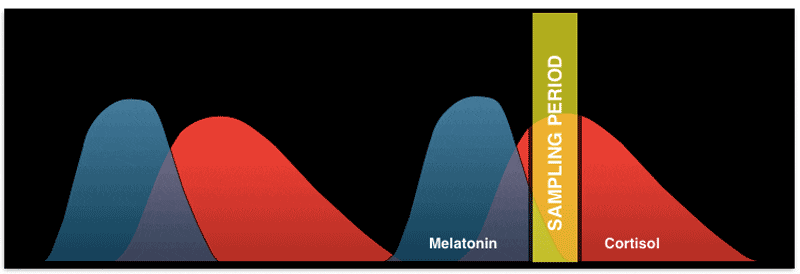
Figure 2: Biology follows cyclical patterns that can be useful for interpretation of data. One myth is the variation of stress and anabolic hormones making it hard to interpret stress and load with biochemical testing. If timestamps are used, coupled with time zone adjustments if athletes are traveling, one can get a good indication if athletes are truly at risk. All coaches need to do is see if the changes are very obvious, not compared to other parts of the day. Elevated stress hormones can be seen with GSR mobile devices now, so expect even more accuracy improvements.
Dr. Viru – A branch of biology – chronobiology investigates the influence of solar- and lunar-related biological rhythms on living organisms. Beside circadian rhythm several other shorter and longer rhythms exist, and they all may influence athletic performance. But it can be rather challenging to take them all into account when writing a training plan.
Still, paying attention to athlete’s mood is, of course, important. Estonian Olympic champion Gerd Kanter (a discus thrower) has a sure belief that only happy athletes develop. A coach should know his athlete and try to help to make the training process as enjoyable as possible. Concrete goals and well-planned strategy – tactics to achieve them, noticing small improvements and athlete recognition for them, creating a balanced life for an athlete could be some keywords here.
Carl’s Take – Two vital points here. One minimal athlete annoyance is a barrier that coaches don’t talk about enough. Let’s be honest, sometimes testing and monitoring is a boring or an annoying process. The solution for keeping athletes happy is making monitoring and testing a quick and painless, and only do it when it brings about a big change. The second point is biological and chronological variables making interpretation sensitive to misleading results. To fix this timestamp each test and look at the normal pattern curve to see the most likely path of change and see if the difference in timing is enough to give a false reading. Most athletes are not going to wake up at 3pm, so 8-9am testing is fair, especially when one is likely fasting when doing blood sampling.
Timing of Test Samples
Freelap USA – Besides hormones, many other biomarkers are important to support anabolism such as vitamins and minerals. Creatine Kinase is a marker for good reason. Muscle degradation can elevate this marker, and while it’s not a sign of adaptation, it does indicate heavy training that is normal. Some coaches have elected to time their blood tests during the planned recovery weeks between training phases to ensure sufficient recovery. Do you think a few days of passive rest after unloading week to benchmark against overtraining? Using a panel of free and total testosterone, albumin, SHBG, Cortisol, and other aerobic measures such as iron status and hemoglobin seem to be on the right path. What are your thoughts?
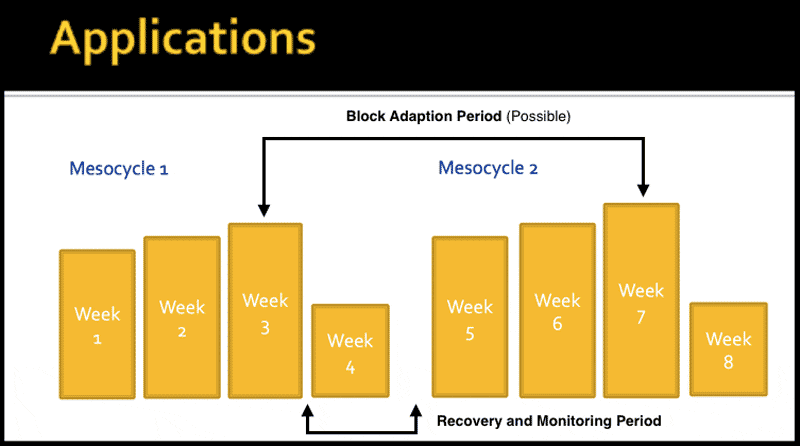
Figure 3: At the BSMPG Boo Schexnayder presented loading schemes that can be easily tested with blood and saliva testing. Coaches can test the recovery of microcycles and the adaptation of mesocycles with smart timing of their tests. For accurate and valid interpretation the chronobiology and sequence of testing can help explain why training is working or not. The arrows and labels of testing periods are my additions, but the training load cycles are Boo’s.
Dr. Viru – The timing of tests depends on the goals of the monitoring. If you are interested to follow the effect of a training cycle, you should test an athlete at the end of the cycle as recovery processes begin immediately after the cessation of a stressor (exercise). If you wish to follow the effectiveness of recovery processes then, the testing should be later – during or at the end of the recovery period. The chosen markers also depend on the main training exercises used during a training cycle that is followed. Aerobic exercises – markers that represent mainly aerobic metabolism, anaerobic exercises – markers of anaerobic metabolism, etc.
The levels of different hormones are useful in training monitoring. Beside basal levels, it is also important to consider the dynamics of hormonal responses. The hormonal responses during exercise influence the hormonal responses during exercise recovery. Therefore, it is important to study both phases of exercise. For this reason, a multiple exercise test that not only gives an opportunity to measure the recovery capacity of the athlete but also can assess the ability to perform normally the second bout of exercise could be useful to detect signs of overtraining syndrome. For example, Meeusen et al. (2010) have published a test protocol with two consecutive maximal exercise tests separated by 4 h. The test could be used as an indirect measure of hypothalamic–pituitary reactivity. Depending on the ‘‘training’’ status of the athlete, hormonal output after the second exercise test will be different.
It is very important to use correct methods in biochemical monitoring. Numerous methodologic factors influence human biochemical measurements and, consequently, can dramatically compromise the accuracy and validity of exercise research. These factors can be categorized into those that are biologic and those that are procedural-analytic in nature. If researchers design their studies to monitor, control, and adjust for the factors mentioned, they will find more consistency in their endocrine data and, thus, enhance the legitimacy of their research. This can greatly aid scientists and coaches in interpreting and understanding endocrine data and, in turn, make their research more scientifically sound.
Carl’s Take – Timing tests is not just when to do blood sampling or saliva testing, but when and what you stack the tests with. For example I always get training load, emotional and mental data (facial coding and exchanges) and performance testing to help see relationships. If you are going to do 3-5 blood tests a year, get more bang for your buck by adding a few tests to see the cause and effect relationship.
The physiology and Biochemistry of Compression
Freelap USA – Compression is a continuum ranging from a tourniquet to a light elastic garment, creating a range of metabolic and hormonal outcomes. Two areas that are growing in interest are compression for recovery and compression for performance, especially in the occlusion market and pneumatic compression devices such as Normatec. Knowing the benefits are limited and constrained with occlusion training, pneumatic compression may help with recovery via the lymphatic system. What would you do monitoring wise to see the impact of recovery long term? Would free testosterone and cortisol testing be useful here?
Dr. Viru – The conclusions of the latest review article (Born et al., 2013) about this topic indicated small effect sizes for the application of compression clothing during exercise for short-duration sprints (10-60 m), vertical-jump height, extending time to exhaustion and time-trial performance (3-60 min). When compression clothing was applied for recovery purposes after exercise, small to moderate effect sizes were observed in recovery of maximal strength and power, especially vertical-jump exercise; reductions in muscle swelling and perceived muscle pain; blood lactate removal; and increases in body temperature. It seems that a positive effect on recovery processes exists but is it necessary to monitor it is questionable. Coaches and athletes are more interested in the outcome and not in the biomechanical processes that cause it.
About 20 years ago we made some experiments at Karolinska Institute (Stockholm) using a barochamber Blood supply was reduced by 15%-20% by the application of 50 mmHg external pressure (it is much more than compression clothing does; I do not know the pressure level of Normatec products) over the exercising leg. During 45-min cycling exercise during ischaemia the increase in GH concentration was twice as large as under normal conditions. Despite the below-threshold exercise intensity for activation of the pituitary-adrenocortical system under normal exercise conditions ischaemic exercise elicited cortisol and T3 responses. The results showed the essential role of muscle metaboreceptors in the control of hormone responses during muscle activity. Accordingly, muscle metaboreceptors may play an important role wherever compression systems are involved.
Carl’s Take – I believe in three interventions that are a must with coaches to facilitate recovery and improve results, and they are pool workouts, spa treatments, and circuits. When using ANS and Neuromuscular monitoring I sort athletes into sick, dying, and dead. The athletes that need to train but are tired do benefit from a light circuit, provided they are just slightly overreached. Athletes are tired and sore benefit from a pool workout to get the lymphatic system to support restoration. Athletes who are exhausted, in pain, and mentally burned out need 90 minutes of spa work. Martin Buchheit’s work with HRV and therapies shows next day changes in ANS measurement, so hop in the sauna and plunges and kickstart recovery. Remember that muscle repair is not happening from spa treatments, but coaches need to think about holistic improvements of restoration.
Sport Psychology and Biochemistry
Freelap USA – Sport scientists and performance coaches are sometimes at odds when collaborating. Teams also have challenges when communicating data among other groups such as sports medicine, team coaches, and the athletes themselves. When doing biochemical monitoring do you think it’s good to include the Mental Questionnaires and performance tests nearly at the same time so a cause and effect or causal relationship forms to help drive the value of monitoring? Maybe some speed and power tests, conditioning data, and subjective questionnaires can help create a relationship between science and the individual’s specialized knowledge?
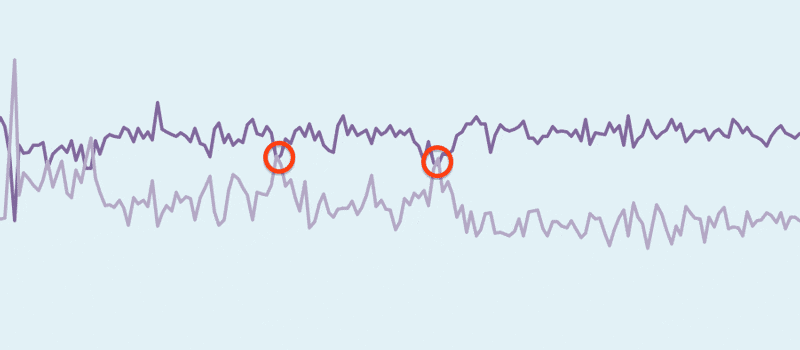
Figure 4: Morale and vitality are the drivers to sustained improvement in training. ANS monitoring can help look at the composite of load, but to slice away the emotional side of stress is the human presence of showing up every day. A relationship may sometimes be limited because of travel and other factors with some Olympic sports, but something is unique with the human to human contact. Above is the HRV and resting HR scores mapped and you can see when problems occur in training, many of them not the workouts but the other 22 hours of the day.
Dr. Viru – I would do biochemical tests and event specific performance and psychological tests at the same time. Important is the timing – in the middle of a training cycle, at the end of a training cycle, at the end of the recovery cycle, etc. All this depends on the goals of monitoring.
People are different or better say individual and I am sure that individual approach to training monitoring (follow individual dynamics of markers, not absolute values) gives the best results for the effective guidance of training. For example, our experiments have showed 5 different responses in cortisol levels to the same exercise in a group of active male students. It is not that easy in team sport but everybody understand that good athletes are special and for sure the functioning of their organism are somehow special.
Psychological questionnaires like RESTQ-Sport, POMS and personal, subjective perception of fatigue and exhaustion are good methods for training monitoring and should be used together with others. Personal communication between coach and an athlete belongs to this group of methods. This is the most common and cheapest method of monitoring but not the easiest one. Coaches should learn to listen and understand their athletes. It is very hard (impossible in my mind) to train high-level athletes without often meeting with them and following them during training sessions. Coach’s Eye is coach’s eye. That is the reason I do not support internet coaches, but may-be I am too old-fashioned 🙂
Carl’s Take – Mental burnout creates biological staleness and poor adaption to training, so every periodization program should look at recovery weeks and the actual pleasure and life building areas. Some coaches actually use movie release dates, concerts, and training camp scheduling to remove burnout periods by adjusting to recreational activities. Sometimes it’s interesting to see stress and other factors with relationships when in training camp.
Please share this article so others may benefit.
[mashshare]

